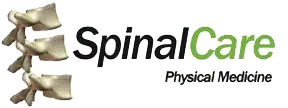By James Franklin, F.N.P.
Migraine headaches are one of the most common medical complaints. One of every six people suffers from them each year. If you are one of the millions of Americans hurting from migraines, cluster or tension headaches, you know the frustration of living in pain day after day.
A new cutting edge FDA cleared treatment called the Sphenopalatine Nerve Block is available now at SpinalCare Physical Medicine. This needleless, painless procedure treats migraines, cluster headaches, atypical facial pain, trigeminal neuralgia, proximal hermicranal, tension headaches, post herpetic opthalimicus and occipital neuralgia.
You may have tried oral medications, physical therapy, occipital nerve blocks, trigeminal nerve blocks, occipital nerve stimulators, Botox injections, homeopathic cures and others with limited or no relief. This new procedure often works when nothing else will.
If you have ever had a migraine, you know when the first symptoms strike, it’s time to find relief—and find it quickly. And, when you find something that works, you stick with it.
Our clinic results have shown a 95% success rate using the Sphenopalatine Nerve Block. Candidates for this procedure generally get results within 30 to 120 seconds usually with a complete or nearly complete resolution of their symptoms.
Migraine headaches can be caused by reduced blood flow to various areas of the cerebral cortex. Symptoms include sensitivity to light and noise, nausea, vomiting and intense throbbing pain that is usually on one side of the head.
A tension headache is generally a diffuse, mild to moderate pain described as feeling like a tight band around the head. They are usually dull, steady, aching pains on both sides of the head.
Cluster headaches occur in cyclical patterns or clusters. They are one of the most painful types of headache and may last from weeks to months. Cluster headaches are rare and not life-threatening. Treatment can help make these attacks shorter and less severe.
A good way to determine if you are having a migraine attack is to remember the word POUND:
P—pounding, how severe the pain is.
O—one day, the length of time a migraine usually lasts.
U—unilateral, meaning most headaches focus on one side of the head.
N—nausea—many migraine sufferers have nausea and vomiting with their headache; and
D—disabling—many patients with migraines find them to be disabling and must lie down until the headache is over.
If you have three or more of these symptoms you need to visit our office and ask about our headache treatment.
Nurse Practitioner James Franklin–James Franklin F.N.P graduated in 1996 with a bachelor’s degree in Nursing from Indiana University. In 2002, he graduated with distinction from Indiana University’s Family Nurse Practitioner Master’s Degree program. He worked as a Trauma/Surgical Intensive Care nurse at Wishard Memorial Hospital for many years and as an occupational health nurse with General Motors for 7 years. He received medical training as a hospital corpsman in the United States Navy and has taught and served as a department head at various medical colleges. James is trained in trigger point injections, ultrasound-guided joint injections and nerve blocks. He joined SpinalCare Physical Medicine in 2012.
